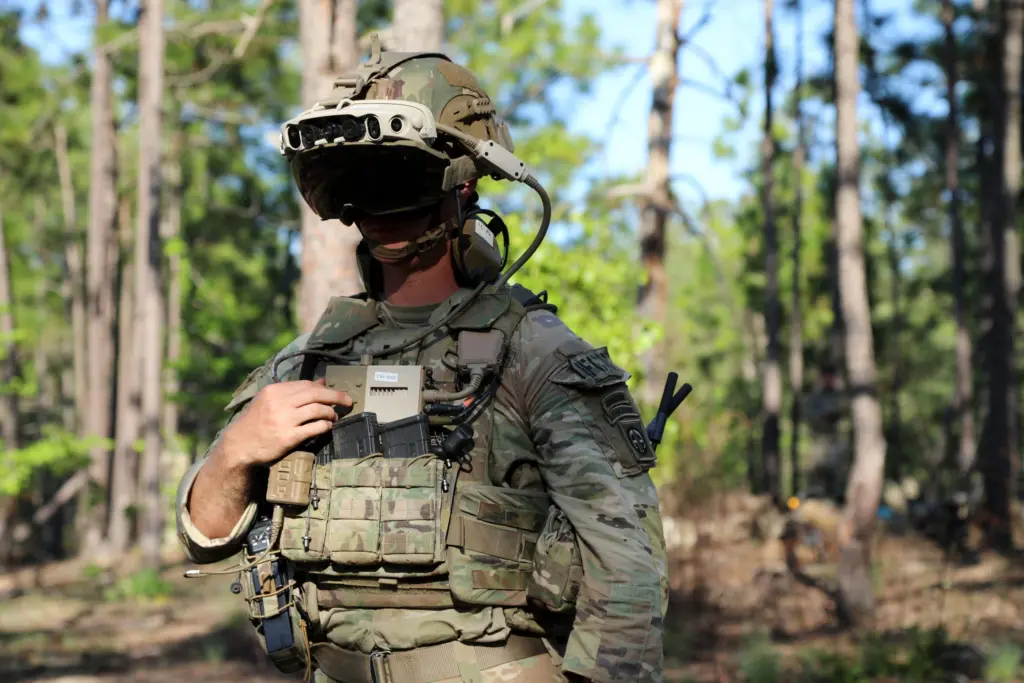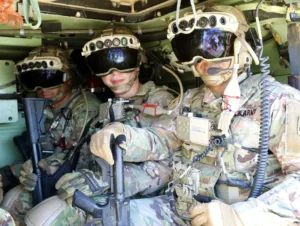The integrated visual augmentation system (IVAS), developed by Microsoft for the United States Army, is supposed to transform military operations with cutting-edge augmented reality (AR) capabilities. This military AR system promises enhanced situational awareness, improved target identification and tracking, augmented reality training, and real-time communication for soldiers.

Microsoft has reached a critical milestone as the company delivers the first 20 IVAS 1.2 prototypes to the US Army for upcoming tests. The Army is eager to see if design changes are sufficient to ensure soldiers can safely and comfortably use this high-tech system in combat. The IVAS 1.2 prototypes will be put to the test during a soldier touchpoint at Ft. Drum, NY next month, where light infantry soldiers from the 10th Mountain Division will evaluate the system’s performance, according Breaking Defense. Should the IVAS 1.2 version not meet expectations, the Army is prepared to compete the program with other companies.
The Role of AR in Battle
The IVAS system offers a range of advanced capabilities designed to enhance the performance and effectiveness of soldiers in the field. By overlaying critical information onto the soldier’s field of view, the system provides real-time data, such as terrain maps, friendly troop positions, and enemy locations. This enhanced situational awareness allows soldiers to make more informed decisions in complex and rapidly changing environments.
IVAS leverages AR technology to enable soldiers to quickly and accurately identify and track targets, even in challenging conditions. This capability enhances target acquisition, reducing response time and increasing mission success rates. It offers a sophisticated training platform that allows soldiers to engage in realistic virtual scenarios, simulating various combat situations and training for specific missions.
IVAS also enables seamless communication between soldiers, commanders, and support teams through an integrated communication system. This real-time connectivity enhances coordination, information sharing, and overall operational efficiency.
In August 2022, the US Army officially accepted the first IVAS systems. The new 1.2 prototype introduces several design changes based on soldier feedback. Notably, it moves from a helmet-like display with limited field-of-view to a hinged, flat design with a 60-degree field-of-view that can be easily flipped up, allowing soldiers to take breaks more conveniently. The new design also addresses neck strain concerns by relocating the computer puck responsible for data processing to the back of the helmet, providing a better center of gravity.
The IVAS 1.2 version includes a low-light sensor from Canon, which appears to be a significant improvement over the previous version. This enhancement aligns with the Army’s objective to ensure reliable low-light performance.
One significant challenge encountered during testing was cybersickness, causing symptoms such as dizziness, eyestrain, headaches, motion sickness, and nausea. While no definitive cure for technology-induced motion sickness exists, the redesigned IVAS 1.2 form factor aims to mitigate some of these complaints and enhance overall usability and comfort. There may be another technique being applied which focuses on preemptive rendering of 3D virtual scenes. By generating a list of possible views and rendering corresponding left and right eye images beforehand, lag time is eliminated when soldiers maneuver their heads to specific positions. This technique is said to significantly reduces soldier nausea.
The upcoming test of the IVAS 1.2 prototypes will be a decisive factor in evaluating the system’s reliability.

